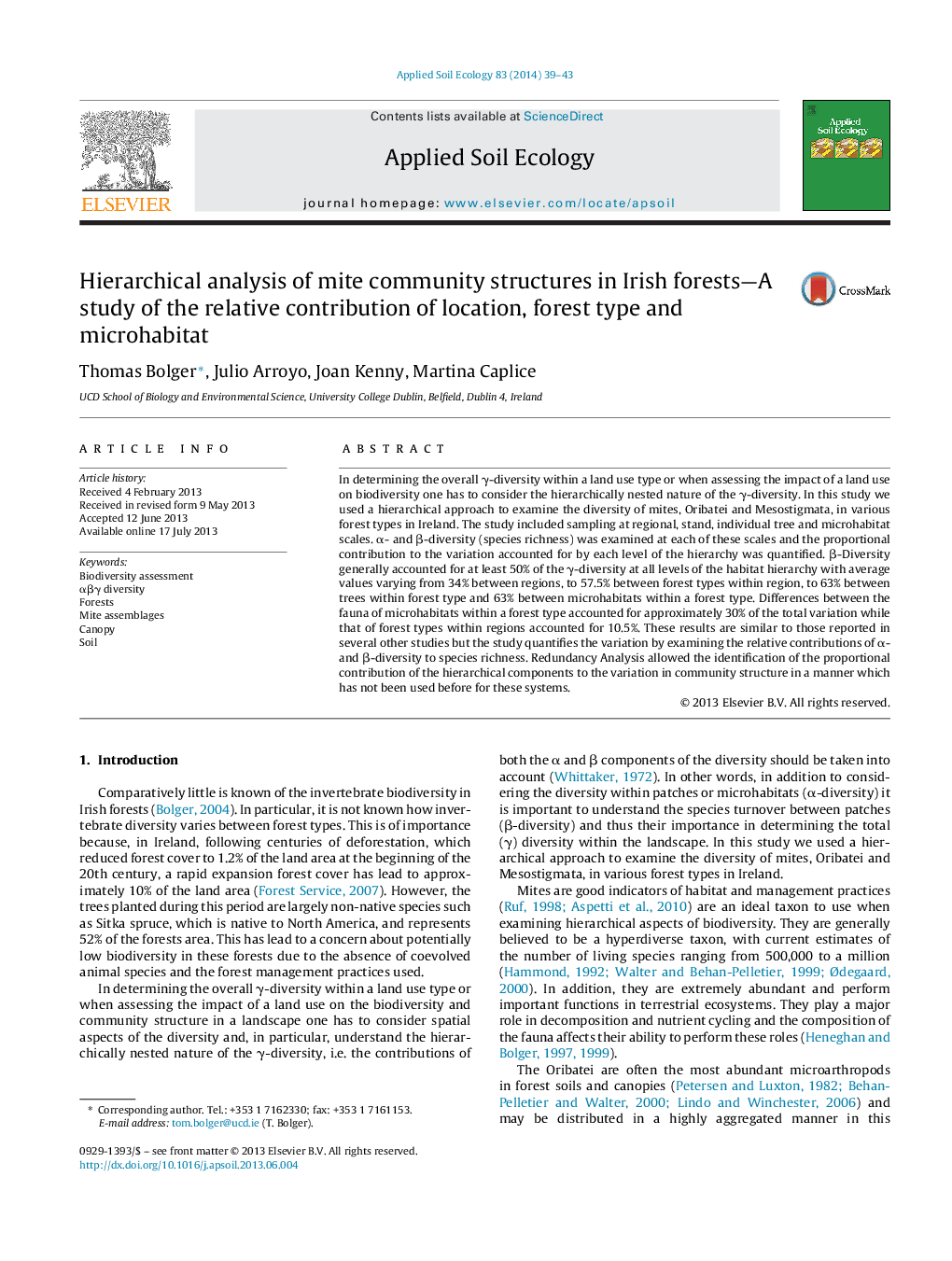| Article ID | Journal | Published Year | Pages | File Type |
|---|---|---|---|---|
| 4382198 | Applied Soil Ecology | 2014 | 5 Pages |
Abstract
In determining the overall γ-diversity within a land use type or when assessing the impact of a land use on biodiversity one has to consider the hierarchically nested nature of the γ-diversity. In this study we used a hierarchical approach to examine the diversity of mites, Oribatei and Mesostigmata, in various forest types in Ireland. The study included sampling at regional, stand, individual tree and microhabitat scales. α- and β-diversity (species richness) was examined at each of these scales and the proportional contribution to the variation accounted for by each level of the hierarchy was quantified. β-Diversity generally accounted for at least 50% of the γ-diversity at all levels of the habitat hierarchy with average values varying from 34% between regions, to 57.5% between forest types within region, to 63% between trees within forest type and 63% between microhabitats within a forest type. Differences between the fauna of microhabitats within a forest type accounted for approximately 30% of the total variation while that of forest types within regions accounted for 10.5%. These results are similar to those reported in several other studies but the study quantifies the variation by examining the relative contributions of α- and β-diversity to species richness. Redundancy Analysis allowed the identification of the proportional contribution of the hierarchical components to the variation in community structure in a manner which has not been used before for these systems.
Related Topics
Life Sciences
Agricultural and Biological Sciences
Ecology, Evolution, Behavior and Systematics
Authors
Thomas Bolger, Julio Arroyo, Joan Kenny, Martina Caplice,
